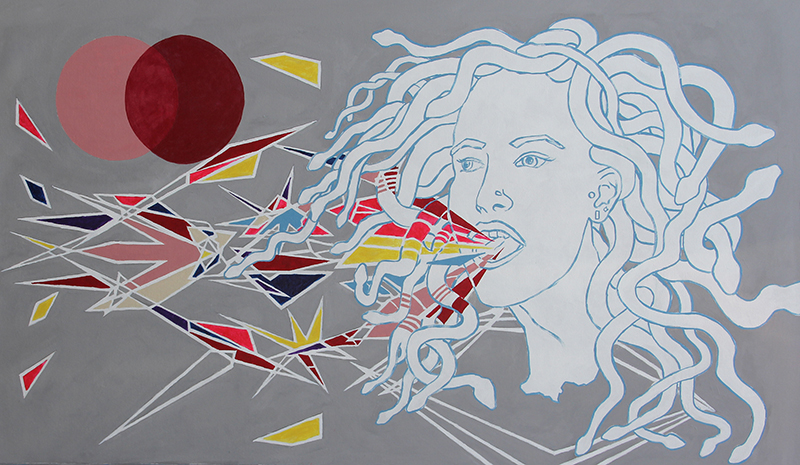Radical Feminism in Contemporary Art: An Interview with Artist Cori Redstone
Art
Rebellious women in U.S. history—particularly in Utah—is something that must be recognized and praised, especially during times when backlash against women, trans- and non-binary individuals are higher than ever. The symbols of rebellious women have also changed throughout the years, whether it’s bright-red lipstick, spiky haircuts or fashionable suits in the workplace. This symbolism and homage to rebellious, bold women is exactly what Cori Redstone captures in her solo show, The Women’s Association of Lecherous Treachery (WALT), the Utah Chapter. Her show will be on display from July 15 to Aug. 15 at the Charley Hafen Jewelers Gallery (1409 S. 900 E.).
Cori Redstone is an L.A. contemporary artist—but her roots are based right here in Utah. Like many Utah children, Redstone was raised in a conservative home that denied her the right to self-expression; however, Redstone did not let that stand in the way of finding her authentic self. “As a child, I was not permitted to write my truth or my history,” says Redstone. “Art was a safe way for me to hide meaning.” Art, for Redstone, became a healthy form of expression. In 2015, she received her MFA from CalArts—a University that has a long and unique history of feminist activism in the arts. In fact, CalArts is where she found the zine that inspired her WALT show. “The Women’s Association of Lecherous Treachery was started by a group of radical feminists at CalArts in the 1970s,” she says. “CalArts has a radical feminist history, and it’s one of the reasons they were at the top of my list of places for grad school. I wanted to go where all these badass bitches had gone.” What inspired Redstone the most was the sheer, passionate anger that poured from WALT zine. “I’m looking through these WALT journals thinking, ‘My god, we’ve lost the ability as women to be angry,’” she says. “If we have a situation in which society has made us unequal, we have every right to be angry. We will reclaim that anger and we will do something about it.”

Redstone channels this passion into her art. Her style, a combination of symbolism, representational and expressionism, is fascinating to look at. The symbolism is as striking as the soft-but-large brushstrokes over her canvasses. “I really am somebody who is a fetishist about painting,” she says. “If I’m able to move my body while I work, I enjoy that and tend to make large, gestural brushstrokes.” Redstone also enjoys experimenting with different mediums and juxtaposing them together. Currently, she’s working with projection and robotics, some of which can be viewed on her Redstone 4D website. Redstone’s pieces can take anywhere from one week to three months—and sometimes longer. “I think [people] have this impression that painters—or artists in general—are able to do this on the weekends and paint outside on an easel,” she says, “which is sort of dismissive and doesn’t really respect the artist, for one, as a laborer, but also as a professional. Once I started meeting professional artists who are selling [their work] to well-known museums, I started to realize my misconceptions about making art and the level of professionalization that is necessary to actually make a living at art.”
The most fascinating aspect of Redstone’s WALT gallery is the vast level of incorporated theory. “As I’m working on a series of artworks, I’m usually reading something that goes along with it,” she says. “I started to read something called The Symbol Sourcebook and I became super obsessed with it, thinking about symbolism and the ways in which we associate the symbols of rebellious women. What are those things that a culture at large thinks of as a rebellious woman? And how can women re-contextualize these symbols, own them and embrace them?” Redstone is always examining and looking for hidden signifiers, even in something as simple as corporate logos. “You can see the evolution of what people use as the foundation of corporate symbols today,” she says. “[It’s similar] to the symbology of the way we view women. We have all these absurd pressures on women and I think we’ve really lost the idea of what feminism really is and what it means today to be a feminist.
Radical Feminism in Contemporary Art: An Interview with Artist Cori Redstone
Page Two >>>
